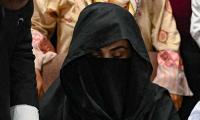“Nothing is stronger than an idea whose time has come”, said Victor Hugo. Universal Health Coverage (UHC) is such an idea.
Covid-19 has drawn an unprecedented public concern to health affairs. The world has learnt how vulnerable it is to a disease outbreak and how a local disease can swiftly turn into a global pandemic. As the world learns to live with the virus and gradually reemerge out of it, it is time to rethink our health systems, reimagine the future of healthcare and reset our priorities. A post Covid-19 world must embrace UHC with a new commitment.
Universal Health Coverage is a visionary construct that must underpin a health system. Let us unpack each of these three words. ‘Universal’ in UHC means healthcare for everybody in a national jurisdiction. The idea of universality is imperative as every human being needs healthcare. It is also embedded in the idea of the right to health which is etched in Article 25 of the Universal Declaration of Human Rights as well as part of the preamble of the constitution of the WHO. Right to health is recognised in at least 115 national constitutions. Pakistan’s constitution does not explicitly provide for the right to health which must be addressed through a constitutional amendment.
Universal also means without prejudice. The national healthcare system must be fair and equitable and must not discriminate between rich and poor, powerful and weak, men and women, old and young, urban and rural, majority and ethnic and religious minorities and even between citizens and temporary residents, as is the case of refugees.
In this context, a particular mention of those who cannot pay for health services is of critical importance. The income-poor are more vulnerable to suffer from malnutrition and communicable diseases and they are unable to afford healthcare costs. Governments, generally in low- and middle-income countries (LMICs), do not spend enough on healthcare which has resulted in the emergence of a thriving and weakly regulated private health sector which in many countries dominate the provision of healthcare. In the case of Pakistan, around 70 percent of healthcare is provided by the private providers. This of course poses a special problem for the poor. The concept of UHC hence include a strong dimension of financial protection for those who cannot pay through, for example, a social health insurance system. The National Health Card in Pakistan partially provides financial protection to the poor in case of hospitalisation which is an important step towards UHC.
Let us now turn to ‘Health’ in UHC. A lay understanding of health and healthcare is generally limited to curative care – getting treatment when sick. Health and healthcare are however much broader terms. The constitution of the WHO defines health as a complete state of physical, mental and social well-being and not just an absence of disease. By this definition, health is much more than just caring for the sick. Based on this conceptualisation, five kinds of health services have been developed and must be equitably provided – preventive health services; health promotion activities; curative health services; rehabilitation and palliative services. A good healthcare system hence has to arrange and provide all five kinds of services.
No healthcare system, however, can provide everything to everybody. Resources for health are always limited and so some kind of prioritisation in health services is inevitable, more so in LMICs. For this, the idea of essential health services has evolved over the last quarter of a century, starting with the 1993 World Bank annual development report which was themed on investing in health with a focus on low income countries. Since then the science of economic evaluation and cost-effectiveness of health services of all five kinds, and even inter-sectoral policy priorities for health, has advanced tremendously, to an extent that in 2017 a nine volume study was launched as Disease Control Priorities, 3rd edition (DCP-3), by the Department of Global Health, University of Washington, involving a nine-year effort by over 500 scholars, policymakers, and technical experts from all around the world.
In essence, this gigantic work has proposed a package of 219 essential health services and 71 inter-sectoral interventions for LMICs that must be funded by the governments. These essential health services, of assured quality, if provided to the whole population can take decent care of the health of a nation. The good news is that Pakistan is the first country to have developed a National Package of Essential Health Services over the last two years based upon DCP-3 which is soon going to be launched and implemented in selected sites and then eventually scaled up at the national level. More on this in a separate column.
Delivery of essential health services has to take place through five delivery platforms – community level through community health workers eg lady health workers; Primary Health Care (PHC) facilities (Basic Health Units and Rural Health Centres); first level hospitals like tehsil headquarter hospitals and in some cases district headquarter hospitals; Tertiary level hospitals; and at the population level (using mass media for preventive services and health promotion). Most important in these delivery platforms are community and PHC facility levels as around 60 percent of essential services can be provided at this level.
PHC is the foundation of UHC. No country has been able to improve its vital health indicators without strengthening the integrated provision of health services at the PHC level. In Pakistan we have good infrastructure at the PHC level which now needs to be strengthened and operationalised. This would be a lynchpin to advancing UHC in Pakistan.
And, lastly, coverage in UHC means covering everybody with essential health services and provision of financial protection to all those who cannot pay.
With a very large private health sector and limited public health sector, UHC in most developing countries, including in Pakistan, is not possible without private providers’ involvement – especially private general practitioners (GPs) who are providing a big chunk of PHC, largely unregulated and limited only to curative care and aloof to national health priorities. On the one hand, GPs must be upgraded to family physicians through short- and long-term strategies and on the other hand the government should become a strategic purchaser of their services in accordance with an agreed package of quality essential health services. This would be a critical step in advancing UHC in Pakistan.
In the nutshell, UHC means, according to the WHO, when all people and communities can use the promotive, preventive, curative, rehabilitative and palliative health services they need, of sufficient quality to be effective, while also ensuring that the use of these services does not expose the user to financial hardship.
The writer is former special assistant to the PM for health.
Email: zfmrza@yahoo.com
MPAs ask for their salaries and benefits to be at par with high court judges and exempt from tax
This system fosters and places premium on VIPs, facilitating VIP culture, which is alive and kicking
Imagine this waste covering over 15,500 cricket stadiums, piled three meters deep every year
If there is one thing that can be gleaned from politics today, it is that we no longer speak same language
Postman argues that “typographic mind” was yielding to “televisual mind”
Pakistan is well poised to meet opportunities that Artificial Intelligence will offer for developments in industries







